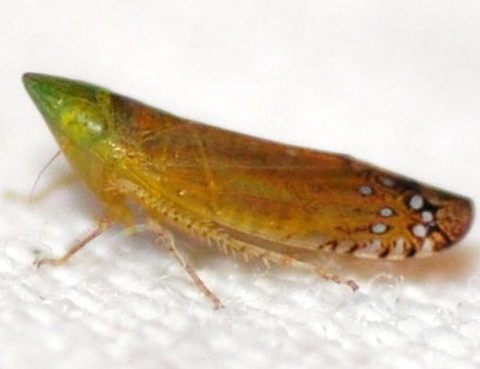Description: A very distinctive species, orange and green. The head is a grass-green color, largely without any markings; the face is also green. The pronotum, scutellum, and wings are rufuous-brown, with some greenish tints; in some individuals though, the pronotum is grayish. The dark wing veins, black marks, and white areolar spots are restricted to the apical third of the wings (in the apical and anteapical cells, and along the costa); the other 2/3 are without marks. The male subgenital plates are short with narrow, rounded apexes. The female pregenital sternite is around one and one-half times as wide as the length at the middle; the posterior margin is rounded to a small lobe on either side of a median notch. Adult males are around 4.0 mm long, females are around 5.0 mm. (DeLong 1948), (Hepner 1947)
For diagrams of this species, see: 3I. |

 »
»



 »
»

